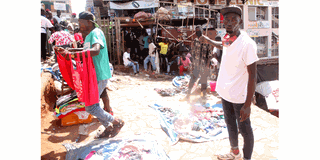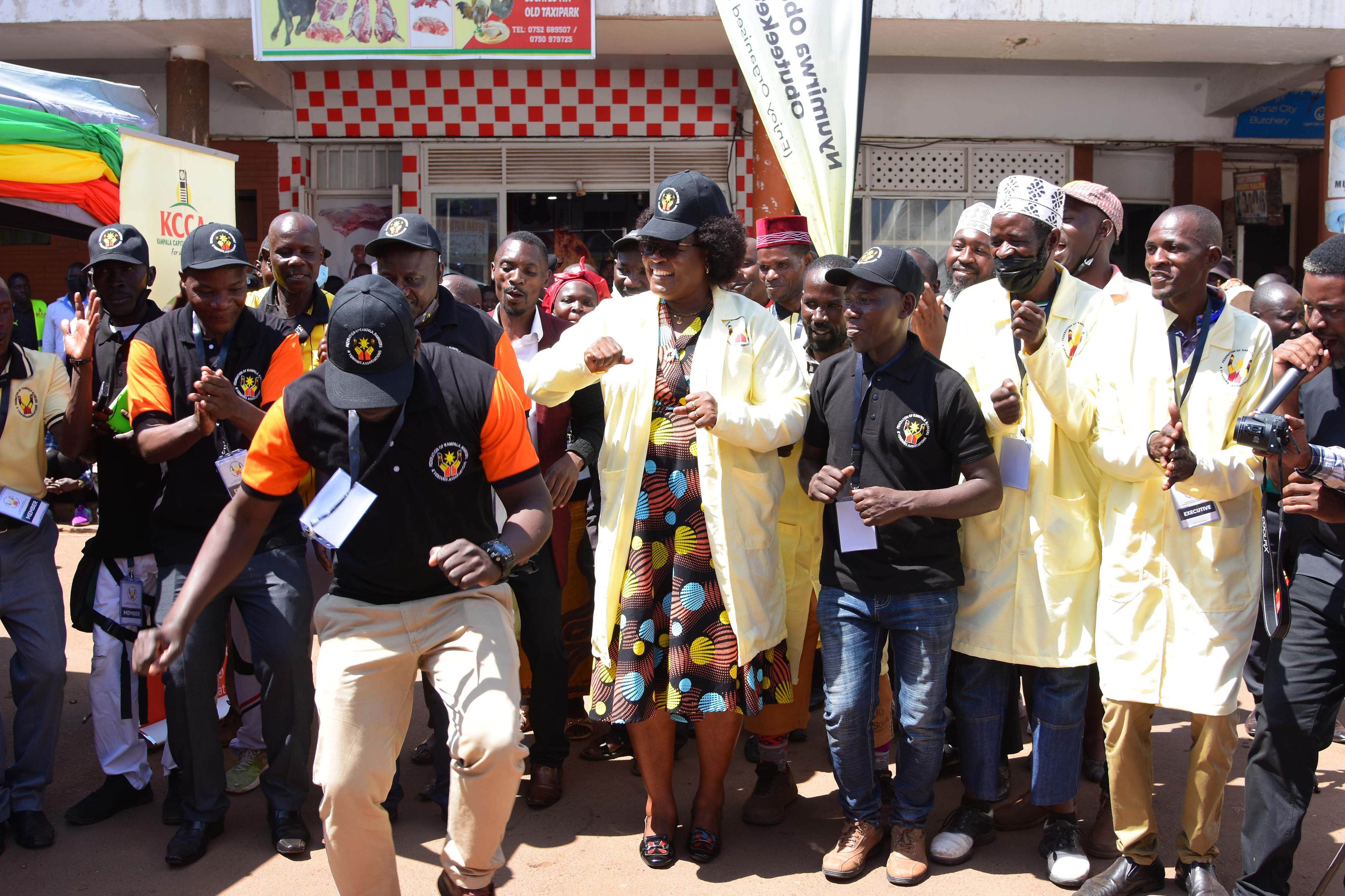Inside govt plan to resettle city vendors

Vendors near the New Taxi Park complain after KCCA personnel sent them away from the streets in January. PHOTO/JOSEPH KIGGUNDU
What you need to know:
- KCCA has revealed that President Museveni has secured three acres of land in Kawempe Division, where about 3,000 vendors will be resettled.
The government through Kampala Capital City Authority (KCCA) has embarked on resettling city hawkers and vendors who had previously been evicted from city streets.
The KCCA’s executive director, Ms Dorothy Kisaka, at the weekend announced that President Museveni had already secured about three acres of land at lower Nsooba Kalerwe, Kawempe Division, where about 3,000 vendors and hawkers would be resettled.
Ms Kisaka revealed this during the ground breaking ceremony for the market in Kawempe on Saturday. The land will be developed with support from Microfinance Support Centre.
Ms Kisaka said similar initiatives would be undertaken in all divisions of Kampala, adding that the move is aimed at decongesting the city.
“Even when I endorsed the removal of hawkers and vendors from the city streets, Gen Museveni tasked me to immediately identify alternative areas within the city where they could urgently be settled,” she said.
“You are lucky to have a President who genuinely cares for everyone, including the ordinary Ugandans like you,” she added amid cheers from the crowd.
Kampala seeks to utilise information and communication technology (ICTs) and other means to improve quality of life, efficiency of urban operations, services and competitiveness, while ensuring that it meets the needs of present and future generations with respect to economic, social and environmental aspects.
The mayor of Kawempe, Mr Emmanuel Sserunjogi, commended the President for fulfilling his pledge of purchasing land for vendors in the division.
Mr Sserunjogi pledged to continue partnering with government to promote programmes that aim at strengthening the economic muscle.
He requested for more 10 places, saying the division accommodates several hawkers in slum areas, who are in need of similar services.
He pledged to task his council members to popularise these settlements so as to attract customers.
The chairperson of Lower Nsooba Zone, Mr George Isabirye, said the initiative would check the high crime rate in the area.
“They will be kept busy as they make their own money rather than staying idle. An idle mind is the devil’s workshop,” Mr Isabirye said.
Mr Joseph Tukamushaba, who represented the executive director of Microfinance Support Centre, Mr Peter Mujuni, said they would continue to prioritise funding for small enterprises.
Mr Tukamushaba revealed that the centre had invested about Shs400 billion under the Emyooga programme.
He said in Kampala alone, market-based Savings and Credit Cooperative (Saccos) had received funding, with each Sacco getting a seed capital of Shs30m.
Mr Tukamushaba said groups such as the Federation of Kampala Hawkers and Vendors Association is an opportunity for the microfinance support centre to reach out to more vulnerable people and deepen their impact of promoting economic development in the country.
President Museveni launched the Emyooga project in August 2019 as part of government’s strategy to transform 68 percent of Ugandan households from subsistence to market-oriented production.
Emyooga programme targets Ugandans above 18 years, who are engaged in businesses such as restaurants, boda boda riders, market vendors, taxi drivers, welders, women entrepreneurs, youth, people with disabilities, performing artistes, veterans, fishermen, leaders and journalists.
The chairperson of Kampala Hawkers and Vendors Association, Mr Richard Lubega, also commended government for resettling hawkers.
Roadmap
Early this month, the KCCA’s executive director, Ms Dorothy Kisaka, announced that the authority had designed a plan to guide the operation of hawkers and vendors.
She launched the roadmap at the Old Taxi Park in Kampala at a function attended by KCCA technocrats, the leadership of various taxi and bus parks, and hawkers.
She said the new roadmap will consider a number of things, including a clear way of identifying suitable areas for hawkers, proper identification of hawkers, and the items to be sold in specific locations.
“The hawkers were walking everywhere in the city in a disorganised way. But we are now saying let us get organised. Let us have proper identification of who is a hawker, where does he or she work, what does he sell and from where does he pay something to the council,” she said.




